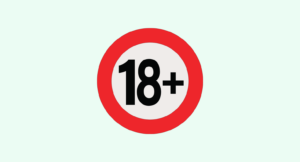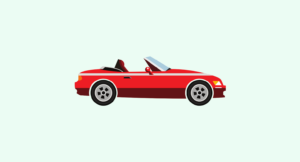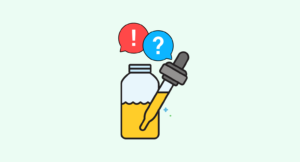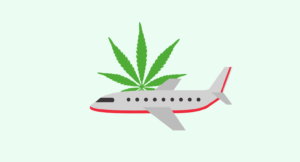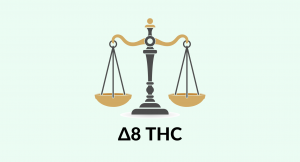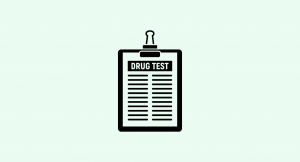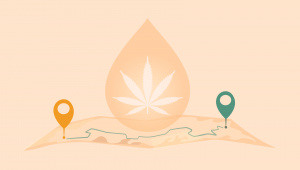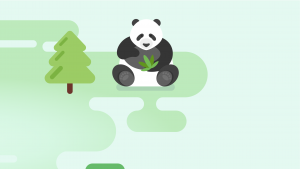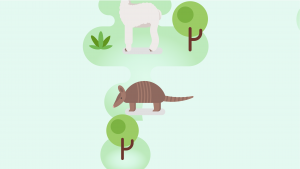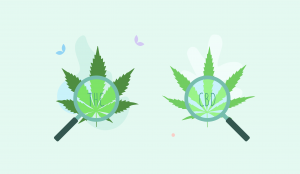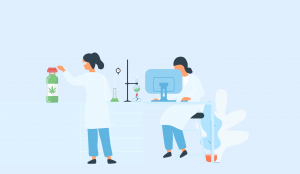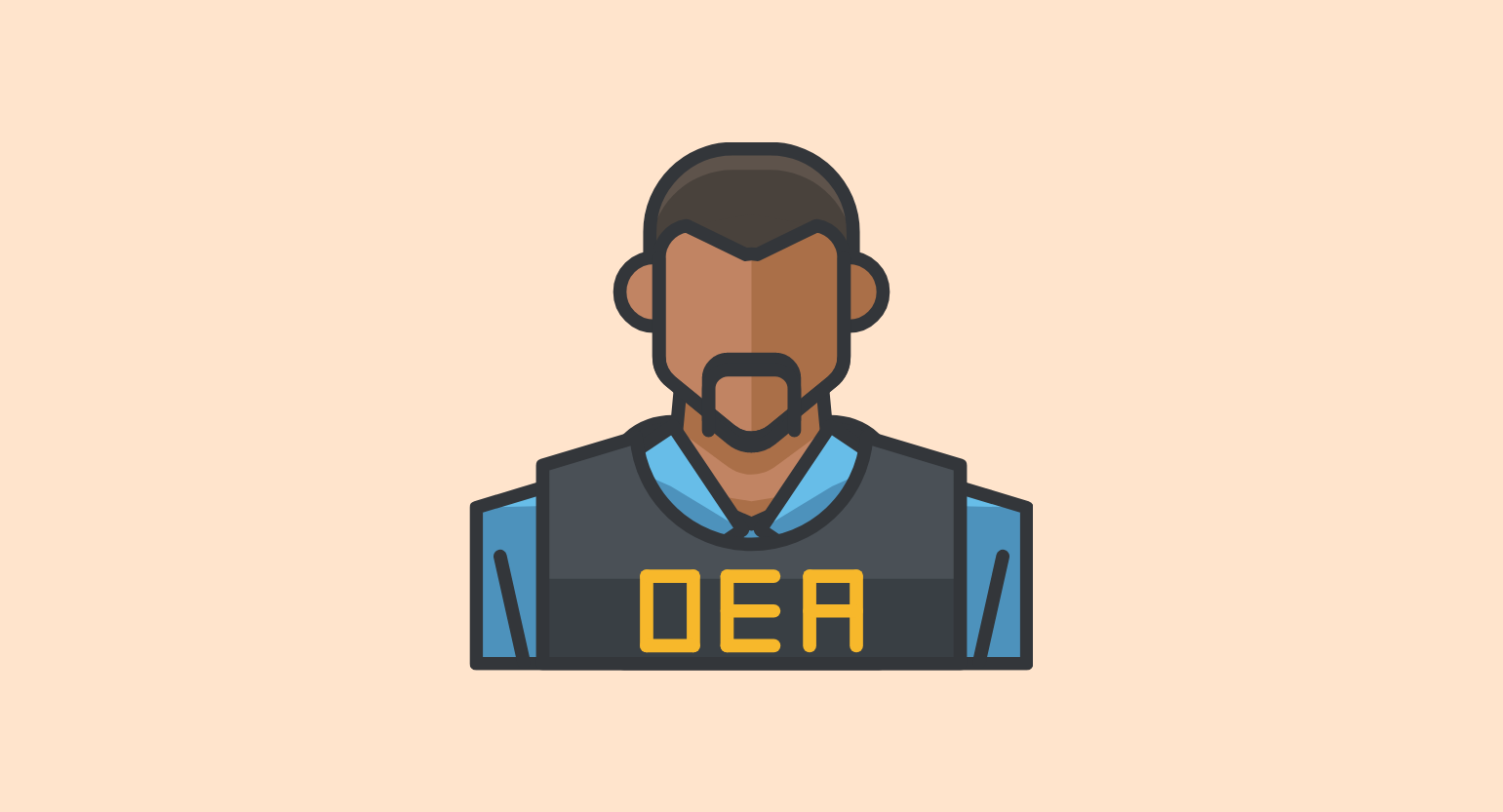
Evidence based
Drug Scheduling & Controlled Substances in the US: Regulations For Cannabinoids
The Drug Enforcement Agency classifies marijuana as a Schedule I drug — but does that extend to all cannabinoids?
The DEA classifies marijuana as a Schedule I drug, but does that mean all cannabinoids are a Schedule I drug, too?
There isn’t one simple answer, unfortunately.
The DEA classification of non-psychoactive cannabinoids like CBD depends on what type of plant they’re derived from and what type of product it is.
This doesn’t mean cannabinoids are completely illegal — most states have completely legalized hemp-derived products, including THC isomers like delta 8 and delta 10 THC.
How Does Drug Scheduling in the United States Work?
The drug scheduling system in the United States is a classification system used by the Drug Enforcement Agency, or DEA. The DEA uses drug scheduling to classify drugs, substances, and chemicals based on their medical uses and potential for abuse or addiction.
Each schedule correlates with what the DEA determines as accepted medical use and abuse potential. For example, Schedule I drugs have no accepted medical use and a high potential for abuse, according to the DEA. Schedule V, the lowest in the DEA’s scheduling system, refers to drugs with low potential for abuse or that contain small amounts of narcotics.
While the DEA does hold power to enforce drug laws throughout the country, it’s important to remember that the scheduling system doesn’t necessarily mean that a drug is safe or not. For instance, THC (tetrahydrocannabinol) is on the Schedule I list despite having known, accepted, and frequently prescribed medical use cases and low potential for abuse.
Drug scheduling also doesn’t correlate with whether a drug is legal or not. For instance, cocaine is considered Schedule II, which includes drugs with high potential for abuse as well as accepted medical use. It’s no secret that cocaine hasn’t been widely used for medical purposes in several decades — but it remains on the list.
Why Does Drug Scheduling Exist?
So if DEA drug scheduling doesn’t always correlate with safety or illegality, why does it exist at all?
When the Controlled Substances Act was enacted in 1971, it established the drug scheduling system and the DEA’s enforcement of those drugs. This law was intended to give the federal government a way to limit access to (and, inadvertently, research on) drugs that are either controlled substances or dangerous to the public.
The drug scheduling system exists so that the public and the government, namely law enforcement agencies like the DEA and police, can enforce rules and regulations around drugs in the US. As drugs climb higher on the scheduling list, they’re easier for the federal government to control and easier for lawmakers to create policies around.
As you can imagine, this system is ripe for political bias and racial inequality. The reasons that certain drugs remain in certain schedules, like marijuana, have to do with the way police view the people that have used those drugs historically.
Schedule I
Schedule I drugs have no accepted medical use, lack of safety for use under medical supervision, and a high potential for abuse.
Examples of Schedule I substances are heroin, marijuana, LSD, peyote, ecstasy, and magic mushrooms.
Schedule II
Schedule II drugs have a high potential for abuse and addiction. This includes some narcotics and some non-narcotics.
Examples of Schedule II substances are oxycodone, morphine, opium, cocaine, amphetamine, methamphetamine, fentanyl, methadone, and more.
You might recognize Adderall and Ritalin from the Schedule II list.
Schedule III
Schedule III drugs have a lower potential for abuse than Schedule I and II drugs and potential for addiction.
Examples of Schedule III substances are products containing less than 90 mg of codeine per dose, ketamine, and anabolic steroids.
Schedule IV
Schedule IV drugs have a lower potential for abuse than Schedule I, II, and III drugs.
Examples of Schedule IV substances include diazepam (Valium), lorazepam (Ativan), clonazepam (Klonopin), and alprazolam (Xanax).
Related: Does CBD Interact With Alprazolam (Xanax)?
Schedule V
Schedule V drugs have a lower potential for abuse than Schedule I-IV drugs. Most Schedule V drugs contain small amounts of narcotics or other high-schedule substances.
One example of a Schedule V substance is Robitussin with codeine.
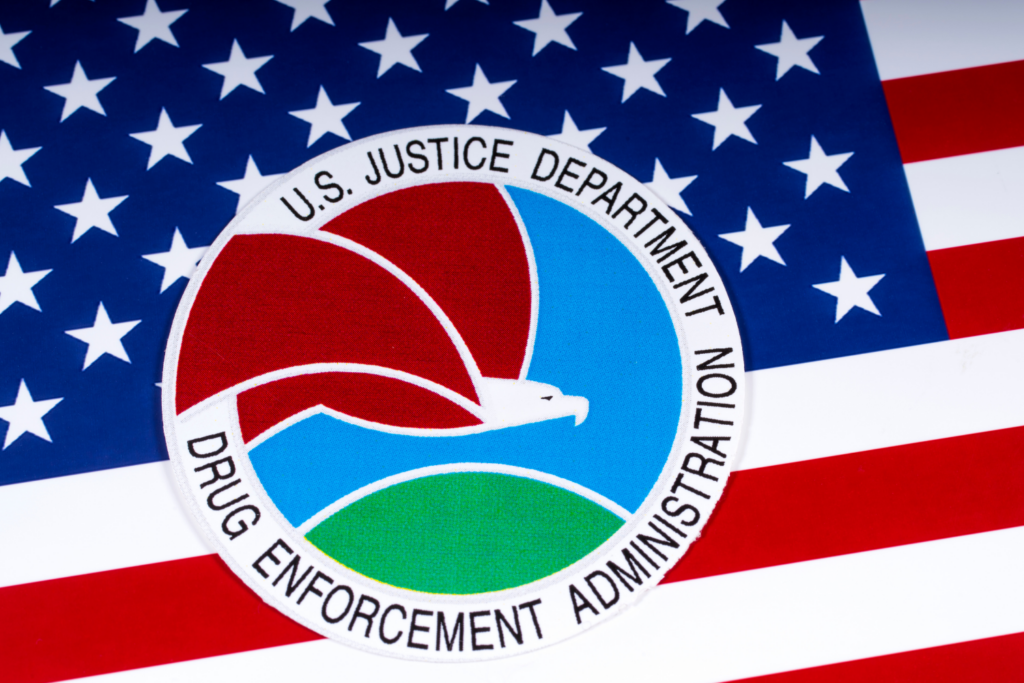
What Are the Penalties For Possessing Schedule I Restricted Substances?
As discussed, the drug scheduling system doesn’t necessarily correlate with illegality. However, some Schedule I drugs are also illegal at the federal level, including marijuana, which has only been legalized at the state level.
The penalties for possessing Schedule I substances that are restricted depending on your record, how much of the drug you have, whether you have evidence of intent to distribute, and the state you’re in.
If you hold a medical marijuana card or live in a state that has legalized weed, you don’t have to worry about the federal government cracking down on you. You are legally entitled to have that Schedule I substance within state lines — make sure not to cross over to another state with your stash in tow.
Generally, possession of a Schedule I substance other than marijuana in a legal state will land you around one year in jail and a multi-thousand-dollar fine. You will also lose your driver’s license for six months.
If you are caught with intent to distribute or while manufacturing a Schedule I substance, you may be looking at a fine of multiple tens of thousands of dollars, as well as a decade or two of prison time.
Equivalents of Schedule I In Other Countries
The drug scheduling system in the US is somewhat unique. Most other countries have some form of prescription drug regulation, but the classifications used by the US are dissimilar from other places. Here’s the breakdown.
A) Canada
In Canada, the National Drug Schedules were established by the Controlled Drugs and Substances Act of 1996. Drugs may appear on schedules I, II, or III and are otherwise listed as uncontrolled substances in schedules IV or V.
Schedule I drugs are those that require a prescription, require a diagnosis before prescription, and are controlled by provincial pharmacy regulations. This includes the derivatives and preparations of certain substances like opium poppy, coca, fentanyl, and amphetamines. That means cocaine, opium, morphine, hydrocodone, and more are all Schedule I drugs in Canada.
THC and CBD are not listed on Canada’s scheduling system, but synthetic cannabinoids are. That includes some common THC:CBD ratio drugs like Nabilone.
B) The United Kingdom
In the United Kingdom, the Misuse of Drugs Act of 1971 established a list of controlled substances at the same time as the US. Like Canada, the UK’s drug scheduling system is mainly used to help pharmacists and doctors better understand the prescriptions they’re doling out while also giving the government a way to control those drugs.
The UK’s Schedule 1 includes drugs that are not used medically, such as DMT and LSD. However, Schedule 2 is more similar to the US’s Schedule I, containing drugs like cannabis, heroin, cocaine, methadone, and fentanyl.
Schedule 2 means that when doctors prescribe the drugs listed, there must be a complete description of the drug’s strength, amount, form, and use. While cannabis is present on the Schedule 2 list, CBD is not a controlled substance. However, CBD in the UK contains less than 0.2% of THC — lower than the threshold for CBD in the US.
C) Germany
The drug scheduling system in Germany includes Anlage I and II — drugs that are illegal to prescribe — and Anlage III — drugs that require controlled substances prescriptions.
Similar to the UK and Canada, German scientists may study the drugs on Anlage I and II with special permission from the government. In the US, Schedule I drugs are wholly impossible for scientists to study, which is part of what makes it so hard to move marijuana off the Schedule I list.
Anlage I and II include drugs like cannabis, codeine, morphine, psilocybin (magic mushrooms), and more. Anlage III includes substances such as amphetamine, medical cannabis produced in state-regulated labs, diazepam, fentanyl, lorazepam, methadone, Nabilone, and more.
Germany’s authorities can only prosecute you for holding controlled substances without a prescription or those on the Anlage I and II lists. Regulated medical marijuana and CBD products are controlled, but you can easily get them with a prescription.
D) Spain
Unlike the other countries on this list, Spain does not have a drug scheduling system. The Spanish government refers to their 1961 Single Convention on Narcotics Drugs and 1971 Convention on Psychotropic Substances to define narcotics and psychotropic drugs, but a scheduling system isn’t in place for the government’s use.
However, penalties for drug possession do differ depending on the hazards of the drug at hand, with more dangerous drugs resulting in longer jail time and more expensive fines. Additionally, it isn’t illegal to possess a drug for personal use — just trafficking and consuming it in public will cause you problems with the police.
Weed is decriminalized in Spain, but you won’t find dispensaries there. CBD is entirely legal at concentrations below 0.2% THC.
E) France
In France, the drug scheduling system is used to classify illicit substances. Each list, ranging from I to IV, includes a category of controlled and illegal substances.
List I is most similar to the US’s Schedule I, with heroin, cocaine, cannabis, methadone, and opium listed because they’re considered narcotics by the French government. It’s illegal to possess or use any of these List I-IV drugs, which include other substances like codeine, amphetamines, LSD, ketamine, and Nabilone, without a prescription.
Despite efforts by the French government, CBD has been ruled legal in France by the European Union. The French government still prohibits the smoking of CBD flower, but all other CBD products with 0.2% or less THC are legal.
F) Australia & New Zealand
In Australia, the drug scheduling system consists of several lists that denote how the public can access those substances. For example, Schedule 7 includes dangerous poisons that may have special rules around sale and storage.
The most similar to the US’s Schedule I is Schedule 8, which is titled Controlled Drugs and includes cannabis, fentanyl, morphine, oxycodone, methadone, and more. This means the government can regulate the prescription and sale of these drugs.
In Australia, medical marijuana is legal, as is CBD. CBD is listed on the Schedule 3 list for Pharmacist Only Medicine, which means the drug requires a doctor’s prescription for sale.
The drug scheduling system in New Zealand uses classes, but the system isn’t used to prosecute people who hold or use those drugs. In fact, nearly all drug possession has been effectively decriminalized in New Zealand in 2019’s Misuse of Drugs Amendment Bill, though intent to distribute and use of drugs can still garner legal action.
New Zealand’s Class B includes substances with a very high risk of harm, which are only available with prescriptions. Class B contains amphetamine, cannabis oil, MDMA, opium, oxycodone, and more. Class C contains drugs with a moderate risk of harm, including cannabis plants, leaves, and seeds.
Cannabis is not legal in New Zealand, but CBD is legal with a prescription. CBD falls into Class B since it is cannabis oil and so must be prescribed by a doctor or pharmacist.
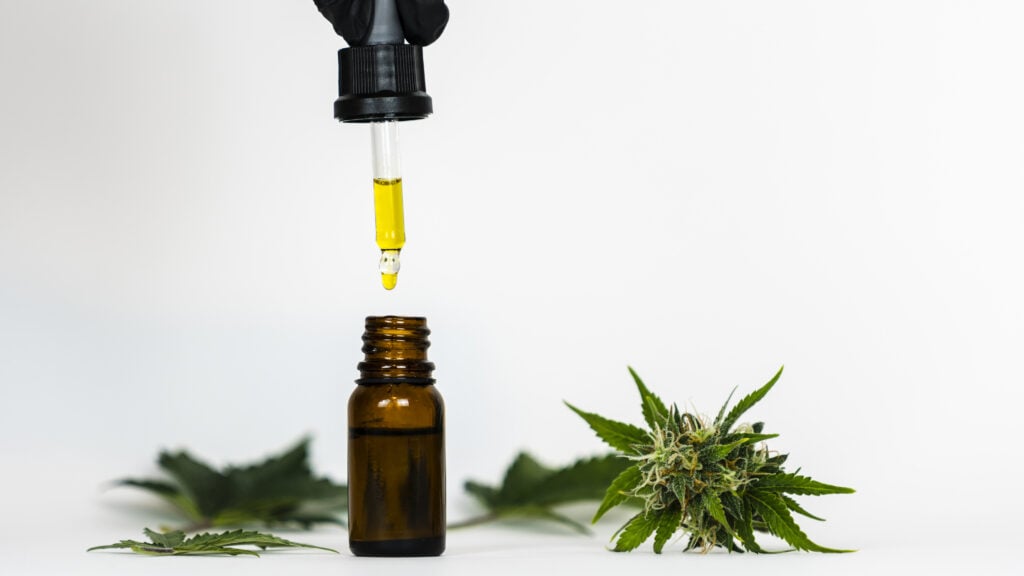
Current Legal Status of Cannabinoids
None of the non-psychoactive cannabinoids derived from hemp are considered Schedule I. This includes cannabidiol (CBD), cannabigerol (CBG), cannabinol (CBN), cannabichromene (CBC), and others.
There are more than 100 cannabinoids and 400 terpenes in cannabis plants. The only one listed on the DEA list of restricted substances is delta 9 THC.
Legal Differences Between Hemp & Marijuana
Hemp is a type of cannabis plant with less than 0.3% THC, whereas marijuana plants contain more than 0.3% THC.
All CBD products derived from hemp plants contain less than 0.3% THC and, in the eyes of both federal and state governments, are not considered marijuana products. However, any product derived from a marijuana plant is considered a marijuana product according to the DEA — even if there’s less than 0.3% THC in the product.
The 2018 Farm Bill
The change in CBD’s legal status is largely due to the 2018 Farm Bill, which legalized cannabis plants with less than 0.3% THC content. This was the first time the US government recognized the difference between a cannabis plant with high THC content and a hemp plant with low THC content.
The result was that hemp plants were suddenly totally legal in the US, which created a huge boom in the CBD industry. Previously, CBD companies were dealing with outsourced hemp farms and under-the-table labs, and now they could grow their own plants, in the US, totally on the books.
This also meant that banks were more willing to give loans to CBD businesses since they knew the federal government wasn’t going to crack down on the industry. CBD companies could suddenly ship products and plants across state lines without worrying about breaking federal law.
Why Is Marijuana (Delta 9 THC) A Schedule I Drug?
What is a Schedule I drug anyway? The DEA defines Schedule I as a drug, substance, or chemical with “no currently accepted medical use and high potential for abuse.” The main difference between Schedule I drugs and Schedule I-V drugs is an accepted medical use.
Although other drugs in the Schedule I class are highly dangerous and addictive, like heroin, marijuana has been scientifically proven to be safe for recreational use time and time again.
The reason marijuana remains a Schedule I drug is largely politicized and bureaucratic. While the passage of the 2018 Farm Bill de-scheduled hemp, legalizing CBD products derived from hemp, it’s still challenging for new studies on marijuana specifically to get underway. Without further studies, dispelling the Schedule I requirement of “no accepted medical use” is even more challenging.
With more and more states legalizing marijuana in the last five years, labs have been able to conduct more studies than ever on the medical benefits and safety of marijuana. There are renewed calls for the rescheduling of marijuana in Congress, but there’s no clear timeline of when marijuana may be rescheduled.
Is Delta 8 THC A Schedule I Drug?
Delta 8 THC is not considered a Schedule I drug as long as it’s made from hemp.
Despite being a form of THC, delta 8 is not listed on the DEA list of Schedule I substances. The same rules apply for delta 10 THC and delta 7 THC.
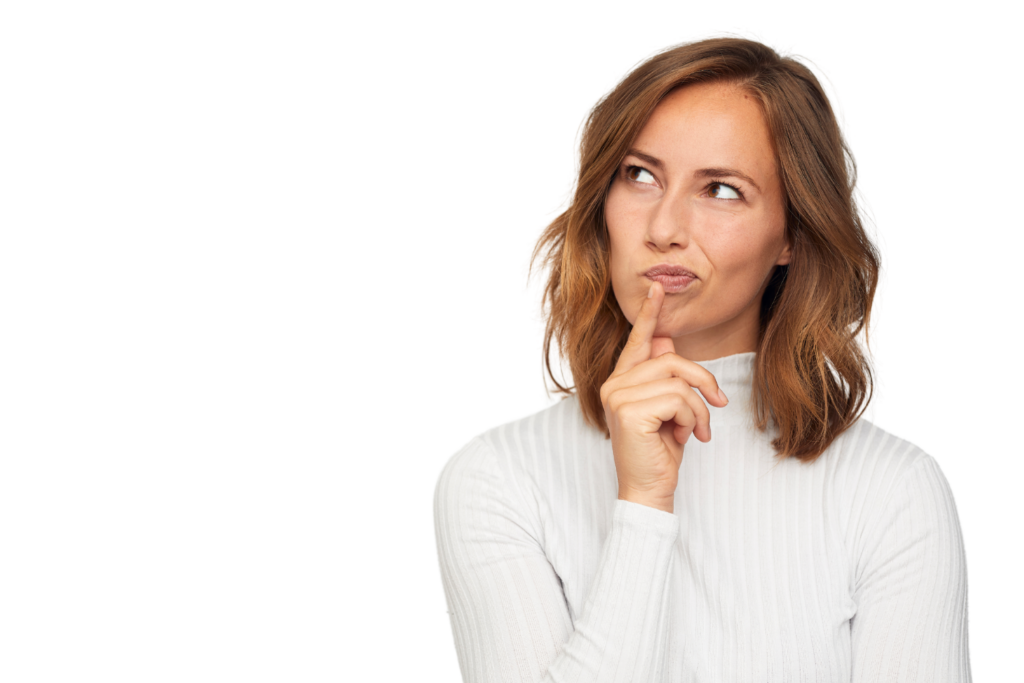
Final Thoughts: Are Cannabinoids Schedule I Drugs?
The only cannabinoid listed as a Schedule I drug in the US is delta 9 THC. Other forms of THC are considered a legal grey area if they’re made from hemp and illegal if they’re made from marijuana.
The only exception here is individual US states with recreational marijuana laws or licensed medical programs.
CBD and other non-psychoactive cannabinoids are not listed as Schedule I drugs.
Always ensure that you buy cannabinoid products from a reputable manufacturer with third-party testing, U.S.-grown hemp, and less than 0.3% THC to ensure you’re ordering federally and state-compliant products.
